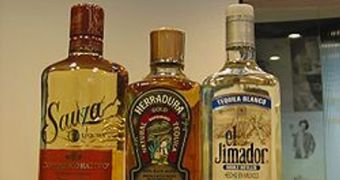Tequila, the world-famous drink made from the agave plant, originates in Mexico for more than 400 years, and has since gained an international reputation for its flavor and unique taste. But now, a new study conducted by researchers at the North Carolina State University (NCS) shows that the way in which the drink is currently produced is nowhere near the traditional one, and that the selected regions of Mexico where production is allowed are currently failing because of unsustainable practices.
Original tequila is differentiated from other forms of the drink, bottled elsewhere, by its GI, or geographical indication, which is a name similar to that of Champagne, the portion of France where the drink with the same name is made. Naturally, over the years, all types of sparkling wine got around to be called champagne, but the original bares the GI of the rural region of France.
Nowadays, the GI for tequila refers exclusively to the entire state of Jalisco, as well as to parts of four neighboring states, which means that this is the only area in the world where the original tequila is produced and bottled. In order to live up to the fame of the place, manufacturers working in the area are constantly trying to up production, without bothering to take into account facts regarding the geography and the terrain on which they are working.
Thus, while agave plants need 6 years to grow to their full potential, they are harvested early, and are not given time to grow. In addition, supplementary plantations were set up, to cope with the booming demand that came after the 1990s. But the terrain currently used was previously deemed useless for the agave, so producers now use fertilizers and pesticides to make the plants grow, instead of caring for them like the peasants in the area do.
"Many of these changes are marginalizing independent agave farmers and workers, undermining the social foundation of the region that relies on the agave and tequila industries," says study co-author Dr. Sarah Bowen, a researcher at NCS. She says that the situation in Mexico's Amatitán-Tequila Valley is deteriorating every year, and that the classic, established method of production is being thrown away.
By missing socioeconomic and ecological sustainability, the area will most likely fail to produce any quality tequila in the short-term, meaning 5 to 10 years. After that time frame, the soil could become so damaged that it would take years for it to recover. The team at NCS published their results in the January 2009 issue of the Journal of Rural Studies.

 14 DAY TRIAL //
14 DAY TRIAL //